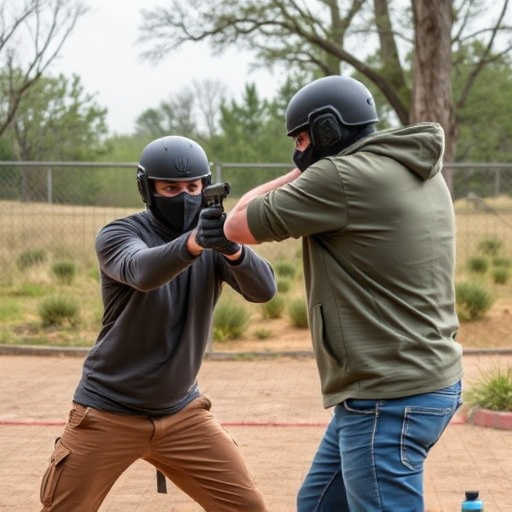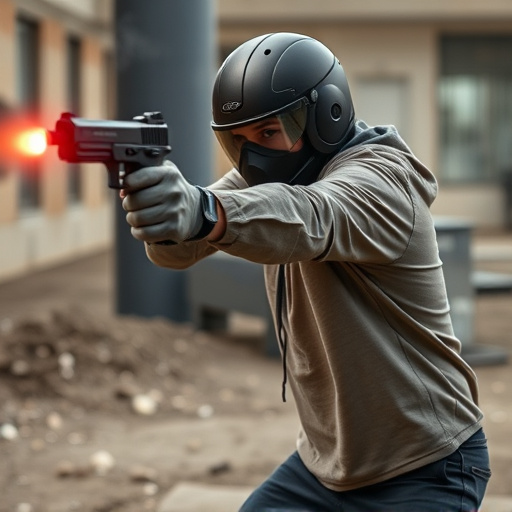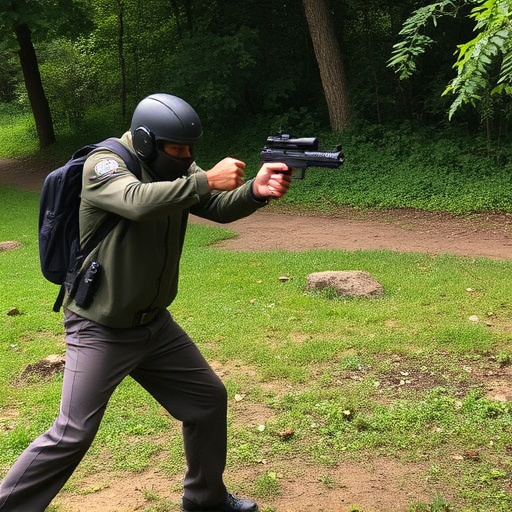Electrical charge weapons like stun guns offer non-lethal self-defense for women, using electric current to immobilize attackers. Debates revolve around their effectiveness and safety, emphasizing need for guidelines and responsible use. Best self-defense stun guns for women balance high voltage, amperage, ergonomics, and legal compliance, enabling quick deployment and escape in dangerous situations.
“Uncover the power of electrical charge weapons and their impact on personal safety, especially in the context of self-defense. This comprehensive guide explores the intricacies of stun guns, shedding light on their effectiveness and safety concerns. We delve into the technical aspects, including amperage and voltage, that influence performance. Furthermore, it highlights design considerations for accessibility, particularly focusing on best self-defense stun guns tailored for women’s needs. Additionally, legal perspectives on regulations and permits are addressed to empower individuals with knowledge about these essential self-protection devices.”
- Understanding Electrical Charge Weapons: A Comprehensive Overview
- Debating Stun Guns: Safety and Effectiveness in Self-Defense
- The Role of Amperage and Voltage in Stun Gun Performance
- Designing for Accessibility: Best Practices for Women's Defense
- Legal Considerations: Regulations and Permits for Self-Protection Devices
Understanding Electrical Charge Weapons: A Comprehensive Overview

Electrical charge weapons, commonly known as stun guns or Tasers, have emerged as a powerful tool for self-defense. These non-lethal weapons utilize an electric current to disrupt muscle control, rendering the target temporarily immobilized. Understanding how they work and their effectiveness is crucial, especially for women seeking the best self-defense stun gun.
Stun guns fire two thin probes connected to wires, delivering a strong electrical charge that overloads the body’s neural system. This results in a temporary loss of muscular control and coordination. The intensity of the shock can vary, with higher voltage levels causing more pronounced effects. For personal safety, stun guns offer a non-lethal alternative to firearms, making them an attractive option for individuals wanting to protect themselves from potential threats.
Debating Stun Guns: Safety and Effectiveness in Self-Defense

The debate surrounding stun guns as a self-defense tool has sparked intense discussions, especially with the increasing popularity of these devices among women seeking effective personal protection. Advocates argue that stun guns offer a non-lethal means of deterring potential attackers, providing users with an extra layer of safety when facing dangerous situations. With a simple click or twist, these devices deliver a powerful electric shock, temporarily incapacitating the target and allowing the user to escape. For instance, the best self-defense stun gun for women often features compact designs, easy-to-use mechanisms, and high voltage outputs, catering specifically to the needs of individuals who prioritize personal safety.
However, critics raise concerns about potential misuse, accidental injuries, and the overall effectiveness of stun guns in real-world scenarios. They argue that while stun guns may work in ideal conditions, their reliability in stressful situations is questionable. Moreover, the physical impact and psychological trauma associated with such devices cannot be overlooked. As a result, there’s an ongoing need for comprehensive research and regulations to ensure the safe use of self-defense tools like stun guns, especially for vulnerable populations seeking protection, such as women.
The Role of Amperage and Voltage in Stun Gun Performance

When considering a best self-defense stun gun for women, understanding the interplay between amperage and voltage is key to assessing performance. Amperage, measured in amps, represents the amount of electric current flowing through the device. A higher amperage means more power, potentially delivering a stronger stun effect. Voltage, on the other hand, measures the force or pressure behind the electrical charge. It determines how much impact the stun gun will have on its target.
For effective self-defense, a stun gun should strike an optimal balance between these two factors. A stun device with a high amperage rating (typically 12,000V or more) coupled with consistent voltage output ensures maximum shock and disorientation of the assailant without causing severe harm. This combination allows users to incapacitate attackers quickly, giving them precious time to escape potentially dangerous situations.
Designing for Accessibility: Best Practices for Women's Defense

When designing self-defense weapons, especially for women’s specific needs, accessibility and ease of use are paramount. Best self-defense stun guns for women should prioritize ergonomic design, ensuring they fit comfortably in a woman’s hand, allowing for swift deployment during an attack. Weight is also critical; lighter devices enable users to aim more accurately and reduce fatigue during prolonged use.
Additional features like a simple, single-trigger mechanism, bright LED flashlights for better visibility during nighttime incidents, and built-in alarms or whistles can greatly enhance their effectiveness as personal protection tools. Training and education should accompany these devices, empowering women with the knowledge to defend themselves confidently in various situations.
Legal Considerations: Regulations and Permits for Self-Protection Devices

When considering a best self-defense stun gun for women, it’s crucial to understand the legal considerations that come with owning and carrying such a device. Regulations and permits vary significantly across jurisdictions, underscoring the importance of thorough research before making a purchase. In many regions, stun guns are classified as non-lethal weapons, subject to specific laws governing self-defense tools.
Obtaining the necessary permits is a critical step for responsible ownership. This process often involves background checks, training requirements, and even waiting periods. Women considering a stun gun as a personal defense mechanism should explore their local and state laws, ensuring compliance to avoid legal repercussions.
In light of the above discussions, it’s clear that understanding electrical charge weapons is key to making informed decisions regarding personal safety. While stun guns have their debates, specifically concerning effectiveness and safety, they remain a powerful tool for self-defense when used responsibly. For women seeking the best self-defense stun gun, prioritizing accessibility features and legal compliance is crucial. By considering amperage, voltage, and design innovations, individuals can make well-informed choices to protect themselves in today’s world. Remember that knowledge is power, and staying equipped with the right tools can be a game-changer for safety and peace of mind.
